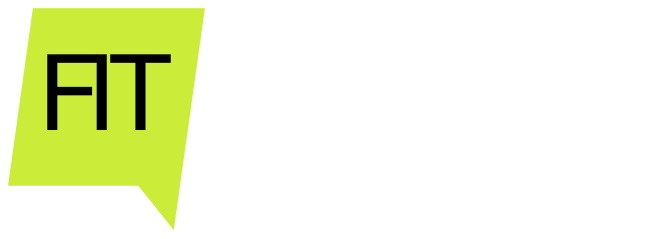
Fitness apps and other activity tracking products have flooded the market and are easily accessible to all types of consumers. However, despite the wide range of products and varying approaches, people continue to struggle to maintain a healthy lifestyle. Many consumers download fitness apps but rarely use the app continuously enough to gain desired results. This results in disappointment, unfulfilled goals, and ultimately abandonment.
Working in a team of three, we all worked collaboratively as UX designers where we performed research, conducted interviews, synthesized data, and tested. During the UI design phase, I led the design direction for the project and collaborated with one other UI designer for the final interface design.
My team and I created a mobile application that reimagined how people could adopt and maintain a healthy lifestyle by utilizing social motivation to help users stay engaged with fitness.
My team approached this project by exploring and researching different fitness domains and creating a competitive analysis to see what products are currently helping users address their fitness needs. We found plenty of digital applications and wearables that could help with anyone’s fitness journey, no matter the skill level. Many of these applications were available for free download on a smartphone with the option to pay for premium features.

But even with all the options and ease of accessibility, our research showed that only one in three adults engage in the recommended amount of physical activity each week. A 2014 study from the Centers for Disease Prevention and Control stated that only 20 percent of adults in the US meet the overall physical activity recommendation. When looking at these statistics, we wanted to know why so many people weren’t meeting the recommended level of activity.
We created a research plan to find out what fitness means to people and what their motivations and barriers were. We set out to interview candidates spanning across several age groups, income levels, and fitness levels to try and uncover commonalities and insights.
Assuming that fitness and health go hand in hand, we made diet a priority. We interviewed people from ages 22 to 54 that were either physically active or inactive. We wanted to know what they did for their health and fitness as well as what frustrations, desires, and personal values revolved around these two topics.
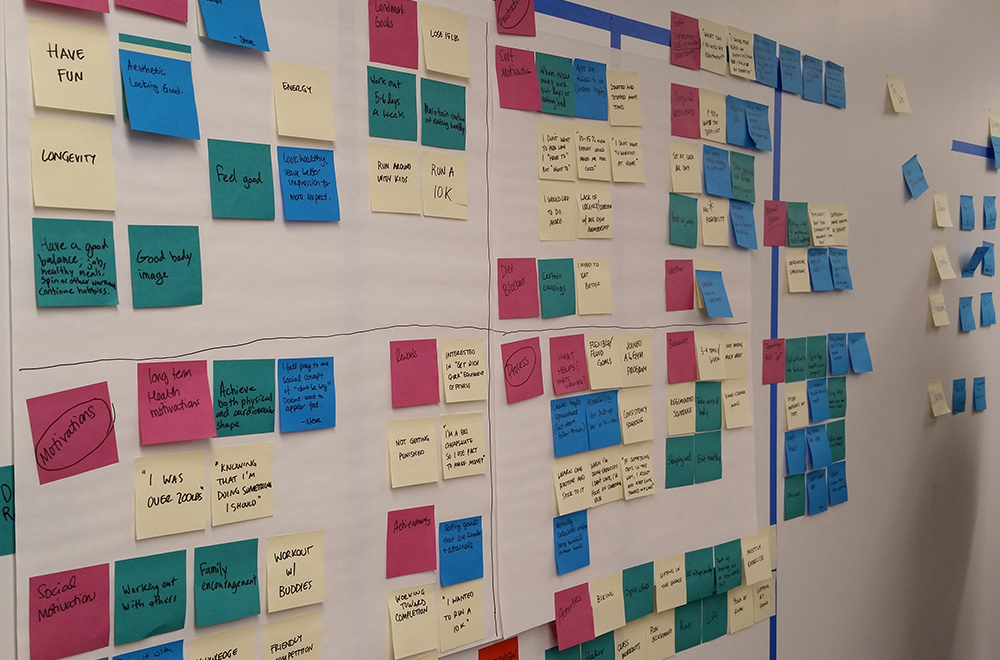
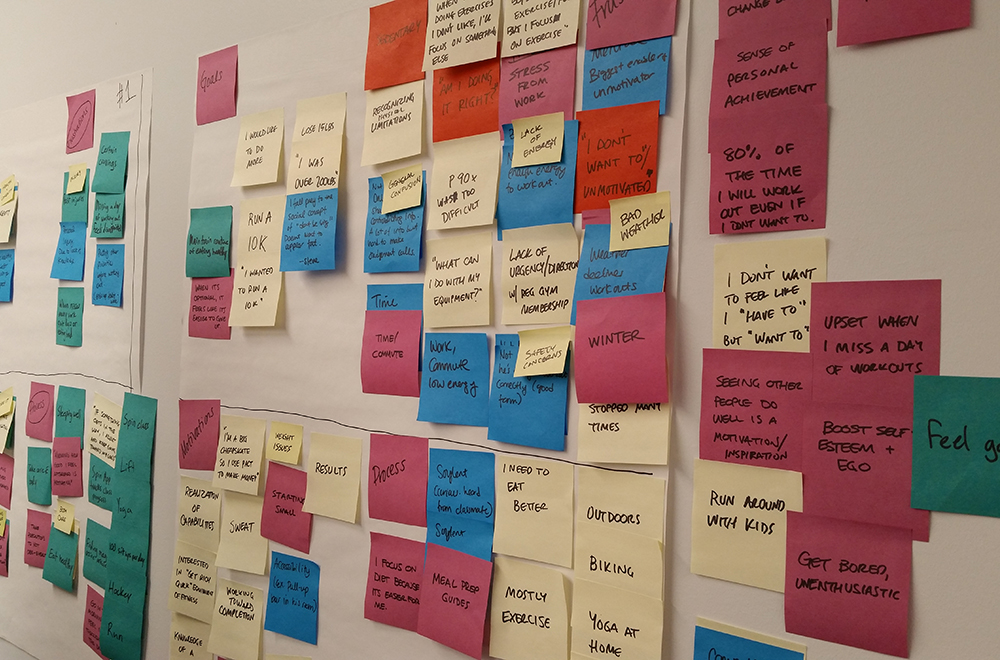
Through these interviews, we saw trends in the motivations and barriers that people had when trying to maintain a fitness routine. We synthesized our observations by creating an affinity map, which allowed us to see user pain points and patterns around fitness. In contrast to our initial assumption, we learned that there were rarely any associations made between the users’ personal diets and their standard of fitness. Interviewees were aware of health standards based on societal expectations, but hardly placed it as a priority. However, we noticed that both our active and inactive candidates placed heavy value on social connections. Another pattern we noticed for all the inactive interviewees was the shared desire for a workout partner to help motivate them.
“…if I had a workout partner, it would motivate me. But self motivation is hard…”
Two patterns stood out most amongst all our interviewees. The first type were those that were self-motivated and the second type were those waiting to be motivated by outside influences. Digging deeper, we learned these key insights:
We knew those who were self-motivated were already working towards fulfilling fitness goals. They were able to find motivation internally and didn’t need external motivators. However, the ones that needed external motivation had the most difficulty prioritizing fitness. Our team wanted to help this group find a solution. So, we created a persona named Heather. Her biggest frustrations are lack of motivation, difficulty of developing a routine, and not knowing where to start.
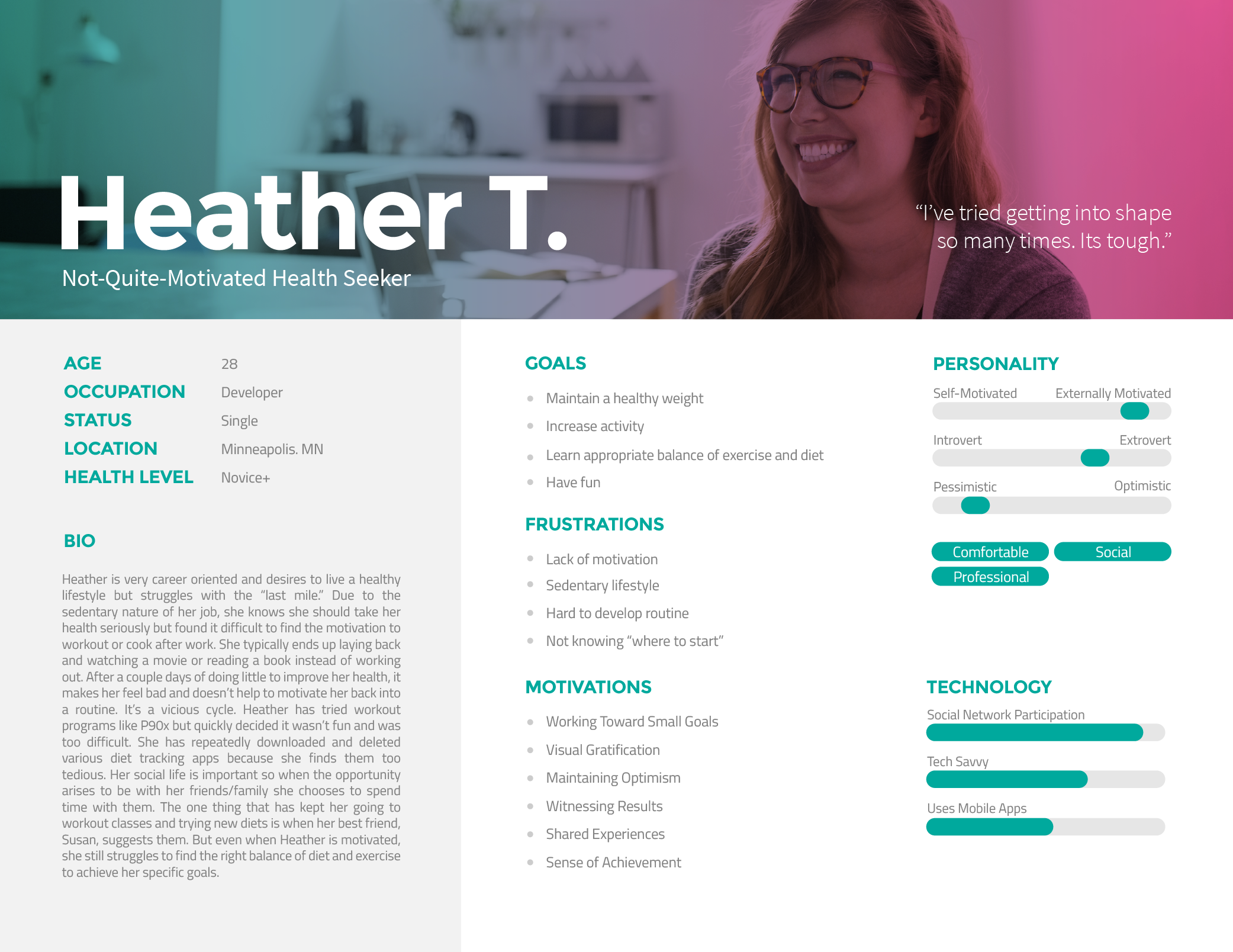

Heather’s frustrations helped us identify our problem statement: “Our target users desire a greater level of health but lacks self-motivation to create consistent habits to promote their health because they do not prioritize it.”
We wanted to help Heather feel motivated. From our synthesized data, we knew her motivations in life were to maintain optimism, share experiences, develop and maintain relationships with others, and have a sense of achievement. So we created our five design principles based on motivation, connection, personalization, support, and engagement.
Encourage people to improve how they feel about health and fitness as well as encourage those who struggle with health and fitness.
Make the user experience social to fulfill needs to connect with others and share that experience.
Cater to the user’s personal needs to improve their productivity and also inspire them.
Users can easily diverge from their goal path. Create a supportive environment for them no matter their stage of progress.
Engage the user in order to encourage exercise frequency, unlike bland and repetitive regimens that will only end in failed attempts to develop a routine.
My team individually explored concepts to help solve for self-motivation. I decided to explore social motivation through an accountability partner since 80% of the non-active interviewees self-identified as needing external motivation.
“Being a part of a team or working out with friends keeps me motivated to keep up the work.”
I conducted further domain research and found a study from the Department of Kinesiology at Indiana University that stated those who went to the gym together, regardless of whether they focused on the same type of exercise, only had a 6.3% dropout rate. This helped validate the importance of accountability through a partner.
I looked back to Heather and knew the biggest things I needed to solve for were her frustrations and motivations that revolved around fitness.
FrustrationsI needed to provide a platform that would give Heather flexibility with her schedule. This platform also needed to be fun and supportive to keep her engaged and positive.
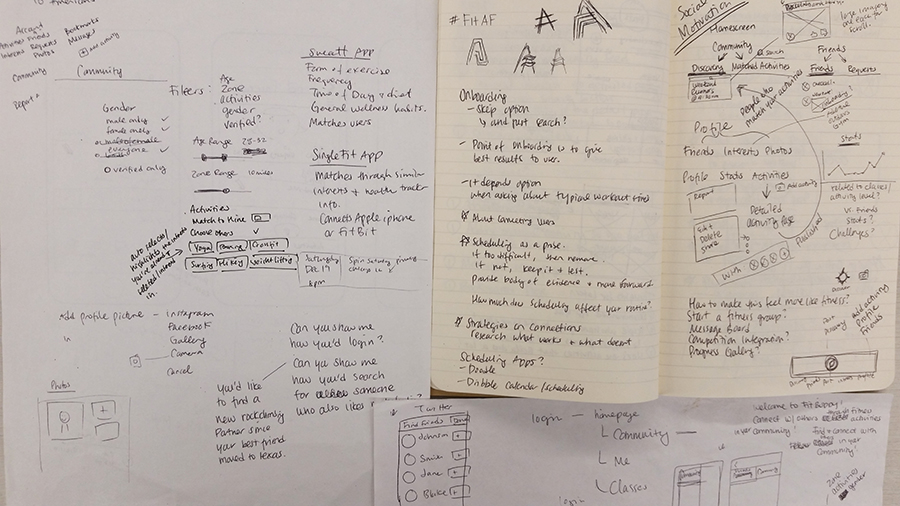
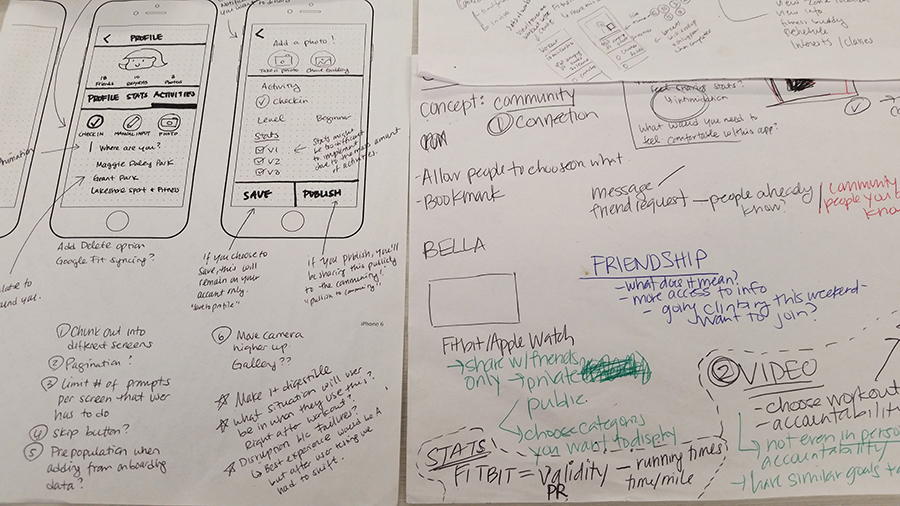
I started to develop my concept and worked towards a solution that encourages users through social motivation by creating a system that encourages users externally, while also allowing users to development encouragement internally.
Thus, Fit Buddy was born. A social network of people you can connect with to create friendships, share experiences, and start fitness habits.
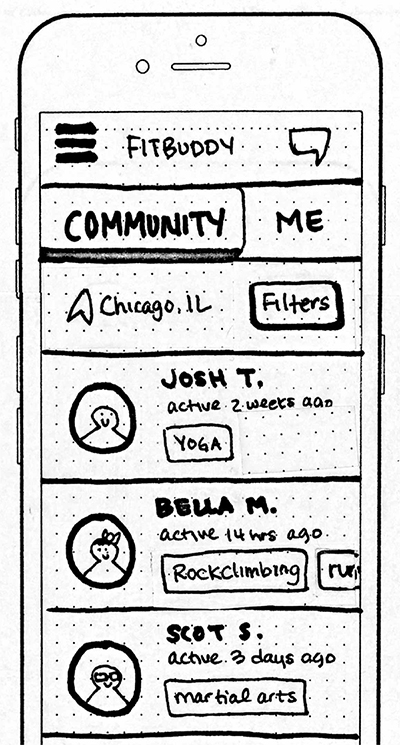 Step 1
Step 1
View your community and search for new fitness friends
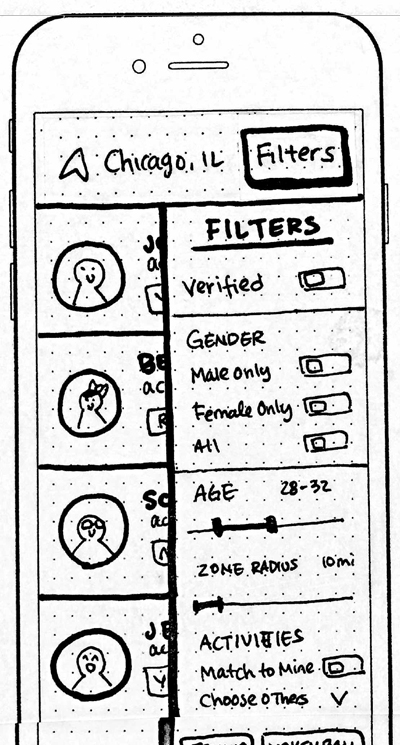 Step 2
Step 2
Filter your results to give you the best matches
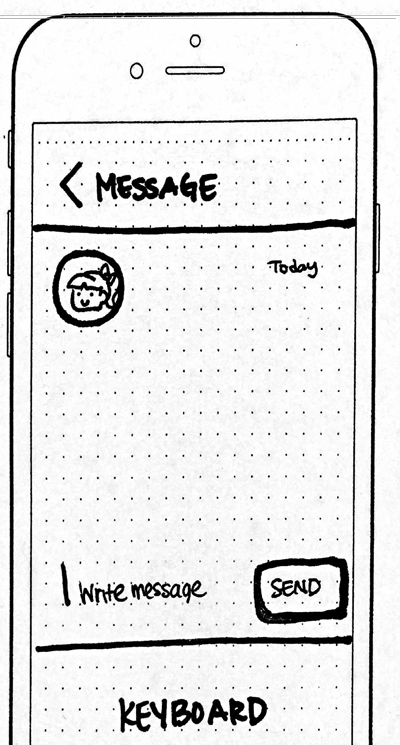 Step 3
Step 3
Message a potential new workout buddy and make plans
Moving forward with this concept, I wanted to create a product that anyone with a social media account could pick up and use both immediately and easily. By drawing inspiration from familiar platforms such as Meetup, Instagram, Strava, and Facebook, I knew I could leverage pre-existing conceptual models to help with familiarity.
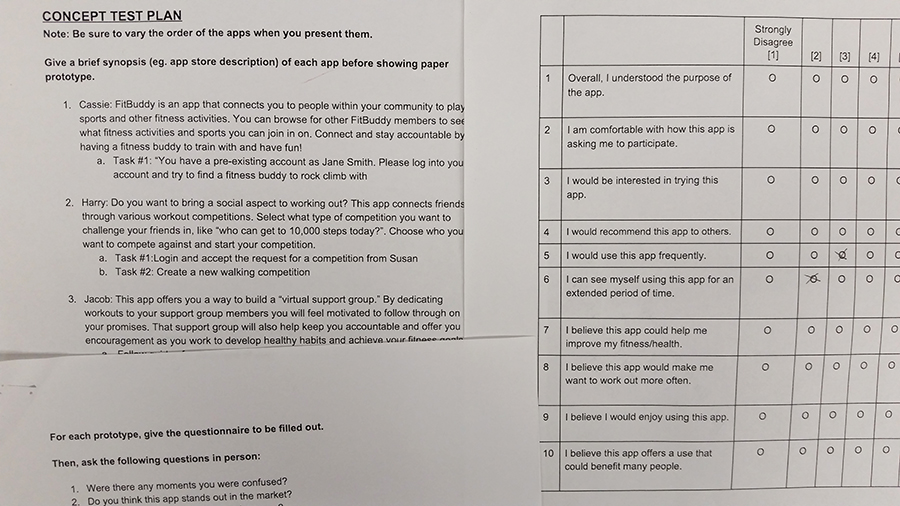
Our team completed paper prototypes for each of our concepts and created a concept test plan to test for desirability amongst the three of us. The test plan presented each concept and asked the user to complete a task flow with a specific scenario. Once completed, they were asked qualitative questions to gauge desirability, frustrations, and plausibility about the app. Afterwards they were asked to complete a survey so our team would also have quantitative data to help gauge each concept.
Note: To avoid any bias, all concept tests were conducted by a separate team.
Once concept testing was done, my prototype tested with the highest success rate of desirability and task completion. The approach of self-motivation through social motivation was validated and my concept was chosen to move forward for further development.
These were some of the great insights learned:
InsightsAlthough the majority of feedback was positive for my concept, this didn’t mean the battle for Heather was won. Our team needed to take these insights into consideration as we iterated and worked to further develop my concept.
[Insert design iterations here, how people thought this was a dating app and how we got around that. As well as the reason for choosing a dark theme and changing the app name]
I led the design direction and chose a dark theme to focus users into a fitness mindset.
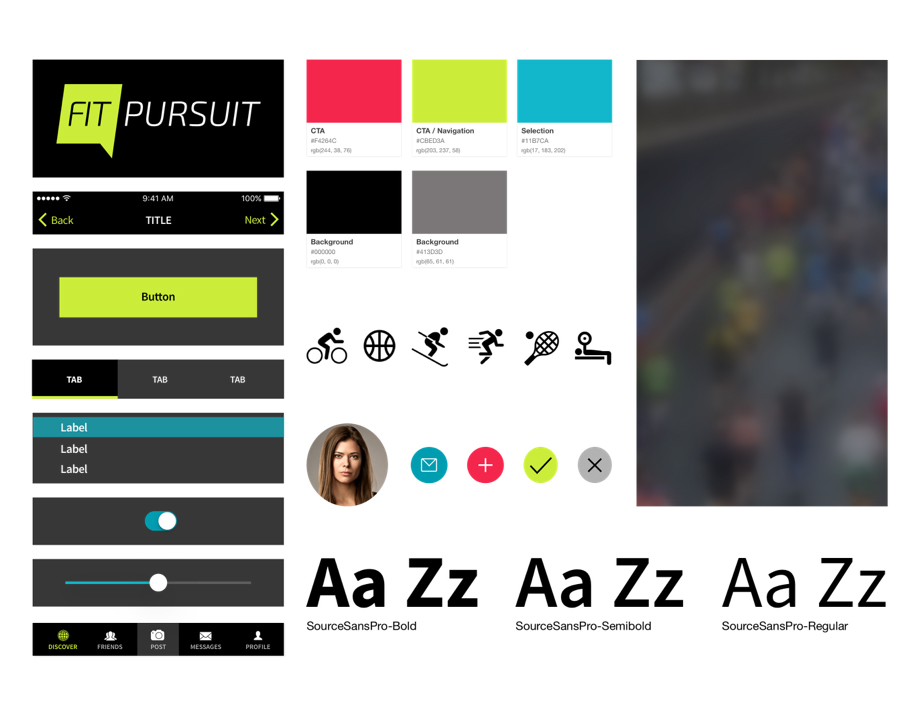
I wanted to adhere to our original design principle of giving people an energetic, happy, and comfortable experience when using the app. So I accented this dark theme by incorporating bright accent colors to add warmth and personality. The use of bright colors would enhance the user’s experience as they navigate throughout the app. It would also help add to functionality by highlighting important navigation and statistics that are pertinent and encourage call to actions.
Throughout this process, we continued to test and refine the product
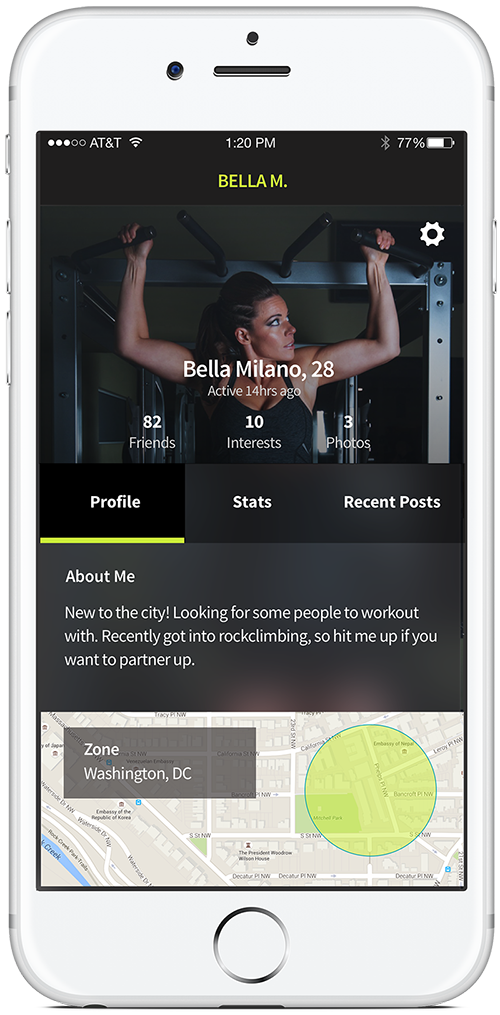
Before
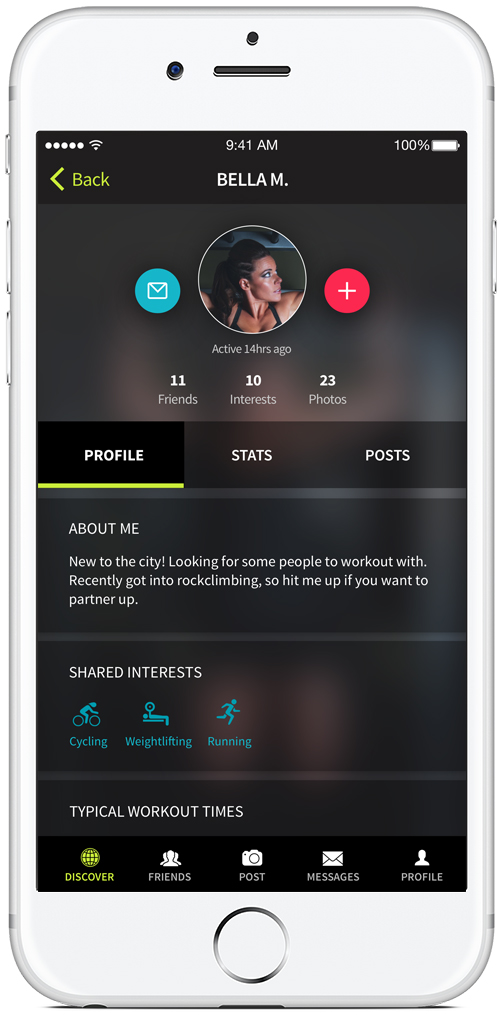
After
Although our team completed Fit Pursuit as an app, that isn’t to say that there isn’t more to explore and consider for the future. We still had further thoughts and potential explorations if this app moved forward and wanted to consider both the business and user side.
Considering the Business Side